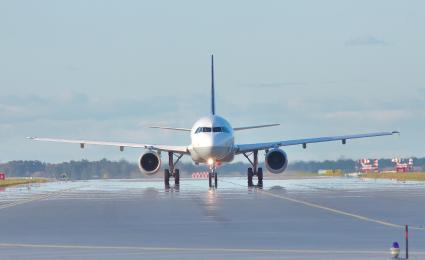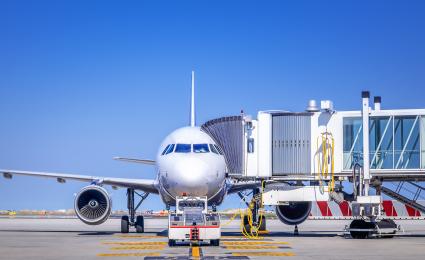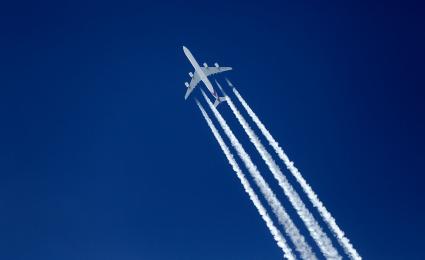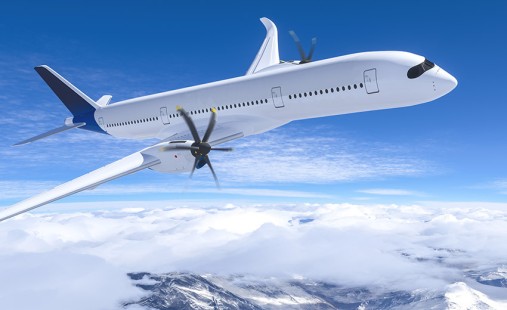Ground-level decarbonization efforts offer promising avenues to reduce airport platforms’ emissions.


Reaching ReFuelEU: development of the sustainable aviation fuels market at scale
Role of Sustainable Aviation Fuels in Italy and current technological evolution
Aviation accounts for approximately 2% [1] of global energy-related CO2 emissions. The role of Sustainable Aviation Fuels (SAF) will be crucial in the process of 'decarbonisation'. From 2000 to 2019, emissions grew by 35%. With expected future growth, this expansion and significance will continue.
_image_caption_none.jpg)
"Today, Italy has a competitive advantage over other European countries. However, in order to maintain this advantage in the future, it is necessary to define now the basis for technological development."
After accounting for fleet renewal, operational improvements, and even regulatory measures such as CORSIA, the majority of airlines still face a significant gap in their decarbonisation efforts. While revolutionary aircraft, such as hybrids and hydrogen designs, are being developed, they are unlikely to become a major part of the global fleet even by 2050.
In this context, the role of sustainable aviation fuels (SAF) will be crucial in the process of decarbonising the industry, as indicated by the International Civil Aviation Organization (ICAO).
In light of this, the European Union has enacted tighter regulations for the adoption of SAF by 2050 through the ReFuelEU legislation, with the objective of accelerating the process towards climate neutrality.
There are four categories of aviation fuels that can be part of SAF to date:
- Biofuels derived from used edible oils and animal fats.
- "Advanced" biofuels derived from forest/agricultural residues and of organic origin.
- Synthetic aviation fuels produced through hydrogen and carbon dioxide, so-called e-fuels.
- "Recycled Carbon Aviation Fuels".
Liquid and gaseous fuels produced from liquid or solid waste streams of non-renewable origin that are produced as an unavoidable and unintentional consequence of the production process in industrial plants. The latter category is currently neither tested nor produced to any significant extent.
These four types of fuel are known as 'drop-in' because they do not require any technological evolution of the engines and can be mixed together with traditional fossil fuels.
To date, only the first mentioned technology can be considered mature for SAF production: the HEFA technology (Hydroprocessed Esters and Fatty Acids), which uses spent edible oils, animal fats and vegetable oils as raw materials. This represents 85% of SAF production capacity today, and 65% of future planned capacity globally until 2030. It is clear that the major European oil companies are focusing their production plans and announcements on this technology.
SAF demand in Italy
The estimated regulatory demand for SAF is around 350 thousand tonnes by 2030. However, there is expected to be extra demand from airlines, which are defining, as part of their 'decarbonisation' plans, a greater use of SAF than the regulatory limit. This effect will result in the estimate of total SAF demand in Italy being around 500 thousand tonnes by 2030.

Domestic production plans using HEFA technology will be able to meet Italy's biofuel demand by 2030. However, with regard to the specific limits for synthetic fuels (approximately 70,000 tonnes in 2030), the forementioned absence of consolidated technologies makes it impossible to prefigure development plans with that time horizon. Based on current raw material prices, production costs in 2030 are expected to be three times higher for biofuels and five times higher for synthetic fuels than traditional fossil fuels.

The 2050 scenario, with a significant increase in ReFuelEU obligations, anticipates a demand of 5 million tonnes of SAF in Italy, comprising 2.5 million tonnes for the biofuels component and 2.5 million tonnes for the synthetic fuels component.
To achieve the 2050 obligations, several developments will be required. For biofuels, this will involve broadening the feedstock base for HEFA technology and developing technologies from forest/agricultural residues and organic origin (i.e. the Alcohol-to-Jet and Gasification-Fischer Tropsch technologies). For synthetic fuels, the scenario would require considerable development on the hydrogen side, with plans for growth on the significant installed capacity of renewable energy and electrolysers, and in technology scale-up for the production of the fuels themselves. The technologies for producing synthetic fuels are already available, but require investment to scale up, with considerable associated production costs.
To create a SAF market at scale and accelerate the decarbonisation of the aviation industry, it is essential to accelerate the technological development for SAF production and continue the development of the commodity network. These measures will produce benefits for the entire air transport ecosystem.

Further development is required to create a market at scale
- Italy has achieved top market positioning in terms of current and short-term SAF production potential by leveraging domestic expertise and development plans.
- SAF incorporation is expected to rapidly scale up (6% in 2030 to 70% in 2050). To achieve a successful SAF market at scale, Italy needs to act now to maintain its leadership position across the entire regulatory timeline by supporting the development of new technologies (i.e., Synthetic jet and biojet technology are two key areas for investment and innovation).
- Current SAF production costs are higher (3x) than fossil-based kerosene jet fuel with significant extra costs today which will grow throughout the relevant timeline across the entire aviation value chain, potentially impacting end-user pricing dynamics (passenger ticket cost)
- Key area for investment and innovation will be logistics (blending and distribution) which in the short-term can be mitigated via the use of a SAF certification system, however long-term solutions require the implementation of a capillary network to service all domestic airports
- Accelerating technological development and securing feedstock networks will bring benefits to the entire aviation ecosystem in order to create a SAF market-at-scale and accelerate the decarbonization process
- A set of policies can be adopted to support SAF supply and demand dynamics, among these tax credits for producers and users along with funds to support both low maturity technologies and logistical evolutions could have significant positive impacts and support the E2E market
We would like to thank Riccardo Franzetti and Erwan Gaudemer for their analysis and contribution to this article.
[1] Source: 2022 value from IEA


_person_144.png)




_person_320.png)


_person_320-2.png)

_person_320.png)